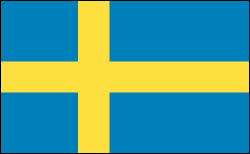Sweden History


Socialist Policy Dominates Sweden for Most of the 20th Century and Into the 21st
An elaborate structure of welfare legislation, imitated by many larger nations, began with the establishment of old-age pensions in 1911. Economic prosperity based on its neutralist policy enabled Sweden, together with Norway, to pioneer in public health, housing, and job security programs. Forty-four years of Socialist government ended in 1976 with the election of a Conservative coalition headed by Thorbjörn Fälldin. The Socialists were returned to power in the election of 1982, but Prime Minister Olof Palme, a Socialist, was assassinated by a gunman on Feb. 28, 1986, leaving Sweden stunned. Palme's Socialist domestic policies were carried out by his successor, Ingvar Carlsson. Elections in Sept. 1991 ousted the Social Democrats (Socialists) from power. The new coalition of four conservative parties pledged to reduce taxes and the welfare state but not alter Sweden's traditional neutrality. In Sept. 1994 the Social Democrats emerged again after three years as the opposition party.
In a 1994 referendum voters approved joining the European Union. Although supportive of a European monetary union, Sweden decided not to adopt the euro when it debuted in 1999 and rejected it again overwhelmingly in a referendum in Sept. 2003.
The Social Democrat Party and its leader, Prime Minister Göran Persson, easily won reelection in Sept. 2002. The center-left Social Democrats had run the government for six out of the last seven decades. That changed when a center-right alliance led by conservative Fredrik Reinfeldt, leader of the Moderate Party, won the election in Sept. 2006.







